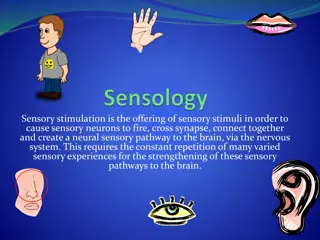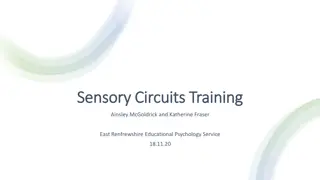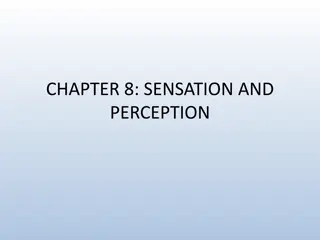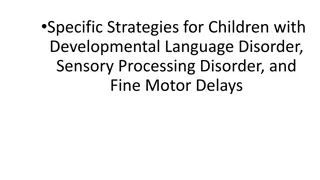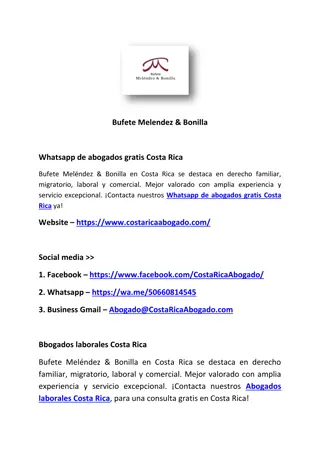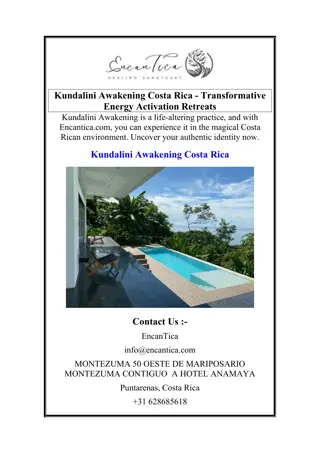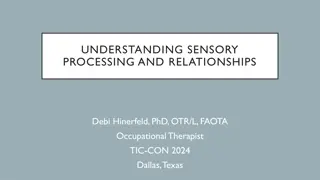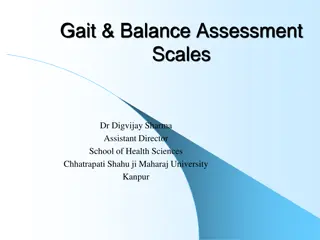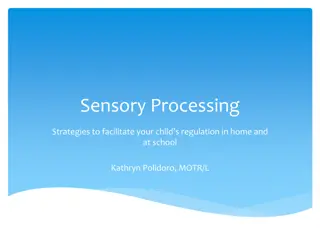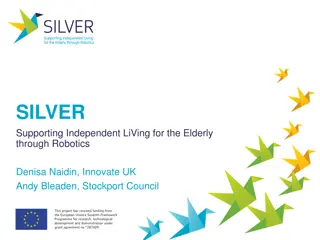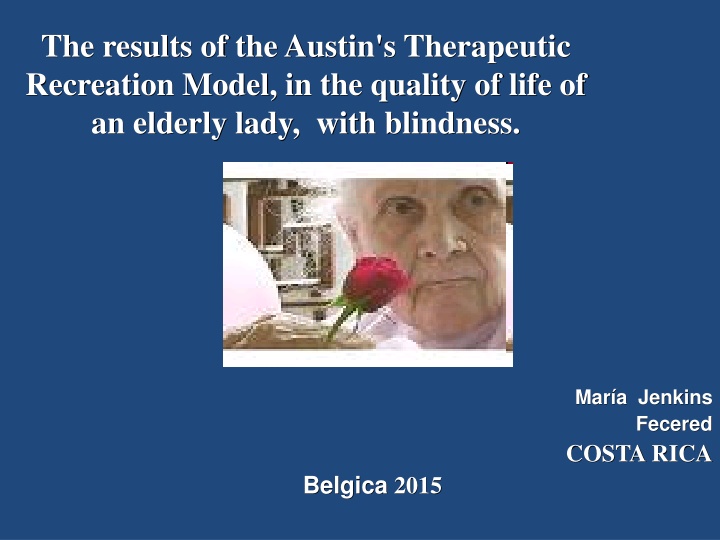
Therapeutic Recreation Model for Quality of Life Improvement in Elderly with Blindness
Explore the results of the Austin's Therapeutic Recreation Model on enhancing the quality of life for an elderly lady with blindness. The study focuses on the impact of the model on seniors with recently acquired sensory disabilities living at home, detailing the diagnosis, evaluation, and adjustments of activities. Initial information reveals the lady's challenges post-surgery, including social isolation, depression, and disrupted daily routines. The Austin Model emphasizes health promotion, patient involvement, and leisure perception, with normative and recreational activities designed to improve well-being and independence.
Download Presentation

Please find below an Image/Link to download the presentation.
The content on the website is provided AS IS for your information and personal use only. It may not be sold, licensed, or shared on other websites without obtaining consent from the author. If you encounter any issues during the download, it is possible that the publisher has removed the file from their server.
You are allowed to download the files provided on this website for personal or commercial use, subject to the condition that they are used lawfully. All files are the property of their respective owners.
The content on the website is provided AS IS for your information and personal use only. It may not be sold, licensed, or shared on other websites without obtaining consent from the author.
E N D
Presentation Transcript
The results of the Austin's Therapeutic Recreation Model, in the quality of life of an elderly lady, with blindness. Mar a Jenkins Fecered COSTA RICA Belgica 2015
The Study Experimental study that determines the application's effect of the Austin therapeutic recreation model, in the quality of life of elderlys with sensorial disability recently acquired, who lives at home.
PROCEDURE Diagnosis To apply the model Evaluations and adjustments of activities Analysis and interpretation of the information.
INITIAL INFORMATION Integral aspects in natural language: Demonstrates the pathological conditions of the beginning The motor and physical problems The social-affective situation Her intellectual condition The evolution without intervention.
More about the case A Blindness acquired after surgery Consequences: always in bed for fear of falling, she separates of relatives and friends, depression, problems to sleep, loss of the daily routine of domestic activities Bounding: house not conditioned for her circumstance, family misinformed about the disability. Aggravating circumstances: deaths of relatives and friends of her generation
THE AUSTIN MODEL The Health Protection and Promotion The Health Protection and Promotion It stabilizes and updates the patient It promotes concepts of freedom, control and self motivation The family is actively involved Perception of leisure Recommended to apply in therapeutic case, with only one person
The Austins Model parts 1-the normative activities: -Restore the health of the persons who are not prepared for Recreation. -Direction is provided in an atmosphere of support . .
2- the Recreation activities The patient tries to solve the health's problems, taking responsibility of the increasing practice of recreatives activities. The therapist collaborates offering suggestions
3- the Leisure activities The activities are freely selected by the patient, considering her motivation, her self-determination and her efficiency. This provides the enjoyment. The therapist does not take part of the programming, limits itself to give feedback.
Programmatical inputs Danish Gymnastic Folklore activities Board games, Hand craft activities Readings and Social recreation. next next
PROCESS Copy Creation. next next
EVALUATION There was evaluated the effect of application of the Model of Austin, on the quality of life, in 3 variables: Physical - motor functionality (articulate mobility range), Partner- affective: self stem, depression, loneliness and fear Cognitive: memory next next
MEASUREMENT'S PROTOCOL It was used: Measurement of articulate displacement from the Senior Fitness Test, The self steem Scale of Rosenberg's, Poms's Test for depression and The valuation of the hearing fluid memory, by weekly interview next next
Grfico 1. Porcentajes de cambio (pre-final) de pruebas de movilidad articular. Senior Fitness Test aplicado en una mujer de 88 a os deficiente visual intervenida con el modelo de Austin de recreaci n terap utica 100 75 80 60 50 44,44 40 % 17,31 20 -30 -11,19 0 Stand up and sit Flex and ext weight left arm Flex and ext weight right arm Step Flex alcanzar pie Flex manos en espalda -20 -40
ANOTHER IMPROVEMENTS The self stem The memory Decrease the frequency of the periods of depression and fear
CONCLUSIONS The Austin's protection and promotion health's model, was effective to improve the quality life of the person in the present case. The model can be applicable to persons with blindness, that lives in home.





